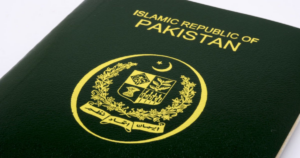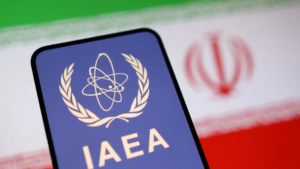New Delhi, Aug 28 (IANS): In recent years, Pakistan has found itself deeply intertwined with China through a series of economic agreements, most notably the China-Pakistan Economic Corridor (CPEC). While these developments were initially seen as a significant opportunity for Pakistan’s economic upliftment, there is growing concern that the country may be falling into a dangerous debt trap.
This article aims to explore this possibility by delving into the complex relationship between Pakistan and China, analyzing the financial data, and considering the broader implications of this economic dependency.
The Allure of the China-Pakistan Economic Corridor (CPEC)
When the China-Pakistan Economic Corridor was launched in 2015, it was heralded as a game-changer for Pakistan. The ambitious plan, part of China’s larger Belt and Road Initiative (BRI), promised to transform Pakistan’s infrastructure, energy sector, and overall economy.
With a projected cost of $62 billion, CPEC was envisioned as a network of highways, railways, and pipelines stretching from Gwadar Port in Pakistan’s southwest to Kashgar in China’s far west. For a country like Pakistan, struggling with chronic energy shortages, dilapidated infrastructure, and a stagnating economy, CPEC seemed like a lifeline. The prospect of new roads, power plants, and economic zones brought hope of economic revival, job creation, and enhanced regional connectivity.
But as the old saying goes, “There’s no such thing as a free lunch.” The financing behind CPEC, while initially seen as a generous offer from China, has turned out to be more complex and potentially hazardous for Pakistan’s economic health.
Looking at the numbers, it becomes clear that the bulk of CPEC’s financing comes from commercial loans with interest rates that, while seemingly manageable, add up significantly over time. For a country already grappling with high levels of external debt, these new obligations present a serious challenge.
The Debt Trap: How Pakistan Became Entrapped
China’s strategy with Pakistan, as with other countries involved in the Belt and Road Initiative, often involves a combination of grants, low-interest loans, and commercial loans.
However, the devil is in the details. Much of the financing for CPEC projects has come in the form of commercial loans with relatively high-interest rates, given Pakistan’s economic situation. One of the most concerning aspects of these loans is that they are tied to Chinese contractors.
This means that a significant portion of the funds lent to Pakistan flows back to China in the form of payments for Chinese goods, services, and labor. This structure minimizes the financial benefits for Pakistan while maximizing the returns for Chinese companies.
As Pakistan’s debt to China has grown, so too has its annual debt servicing burden. The numbers tell a worrying story:
By 2023, Pakistan was dedicating nearly 8 per cent of its GDP just to service its debt to China. This figure is alarming because it represents money that could otherwise be spent on essential services like healthcare, education, and infrastructure development.
The potential for Pakistan to lose control over strategic national assets, such as Gwadar Port, is one of the most troubling aspects of this debt situation. While the details of these loans are often shrouded in secrecy, there is a very real possibility that if Pakistan defaults on its loans, China could seek to acquire stakes in key assets. Gwadar Port, given its strategic location near the Strait of Hormuz, is particularly vulnerable.
The Economic Consequences of the Debt Trap
One of the most significant consequences of Pakistan’s growing debt to China is the erosion of its economic sovereignty. With so much of its economy tied up in Chinese projects and debt, Pakistan’s ability to make independent economic decisions has been severely compromised.
This dependency has also translated into political leverage for China, influencing Pakistan’s foreign and domestic policies. Another concerning consequence is the impact on local industries.
While CPEC has brought significant investment into Pakistan, much of this investment has flowed back to China, as Chinese companies have been given priority in project contracts. This has led to minimal job creation within Pakistan and has stunted the growth of local businesses that could have otherwise benefited from such large-scale infrastructure projects.
The economic strain of servicing its growing debt has contributed to rising inflation and a significant devaluation of the Pakistani Rupee. As the currency weakens, it becomes more expensive for Pakistan to service its debt, creating a vicious cycle of borrowing to repay previous loans.
These trends have had a direct impact on the cost of living in Pakistan, reducing the purchasing power of ordinary citizens and exacerbating economic inequality.
The Geopolitical Implications
As Pakistan’s economic dependence on China deepens, so too does its strategic dependency. This has become increasingly apparent in Pakistan’s foreign policy decisions, which have often aligned with Beijing’s interests.
Whether it’s support for China’s stance on Xinjiang or silence on issues like Hong Kong, Pakistan’s foreign policy is increasingly seen as being shaped by its economic ties to China.
Pakistan’s growing closeness to China has also affected its relationships with other regional powers. India, for instance, views CPEC as a direct threat to its sovereignty, given that the corridor passes through the disputed territory of Gilgit-Baltistan.
Meanwhile, Pakistan’s traditional allies, such as Saudi Arabia and the US, have become wary of Islamabad’s growing alignment with Beijing. The potential loss of strategic assets, such as Gwadar Port, if Pakistan defaults on its debt, is not just an economic issue but a geopolitical one.
Gwadar’s location near the Strait of Hormuz gives it immense strategic value, and losing control over such an asset would have significant implications for Pakistan’s role in the region.
Socio-Political Consequences
The socio-economic consequences of the Chinese debt have not gone unnoticed by the Pakistani public. The rising cost of living, coupled with high unemployment and deteriorating public services, has led to growing discontent with the government.
There is also a growing perception that the government has surrendered national assets to China, fueling nationalist sentiments and adding to the political instability. The centralization of decision-making around CPEC projects, often without public consultation or transparency, has weakened Pakistan’s democratic institutions.
This erosion of democratic norms has contributed to a governance crisis, with power increasingly concentrated in the hands of a few, and diminishing the role of checks and balances.
What Lies Ahead for Pakistan?
If Pakistan continues on its current path, the debt burden may become unsustainable, leading to a potential default. In such a scenario, Pakistan may be forced to renegotiate its debt with China, possibly ceding control over key national assets or making further political concessions.
Alternatively, Pakistan could seek debt relief or restructuring through negotiations with China or international financial institutions. However, this would require Pakistan to implement significant economic reforms, which, while politically challenging, are necessary to stabilize the economy.
To reduce its dependency on China, Pakistan could seek to diversify its economic partnerships. Strengthening ties with other countries, such as the US, the European Union, and the Gulf States, could provide Pakistan with alternative sources of investment and reduce its reliance on Chinese loans.
What started as a promising economic partnership between Pakistan and China has increasingly become a source of concern.
The risks of falling into a debt trap are real, with significant economic, geopolitical, and socio-political consequences.
For Pakistan, the challenge lies in navigating this complex relationship with China while safeguarding its economic sovereignty and national interests.
To avoid the worst-case scenario, Pakistan must reassess its economic strategy, seeking greater transparency in its dealings with China and exploring alternative partnerships. Without these measures, Pakistan risks finding itself in a debt trap with far-reaching consequences for its future.






